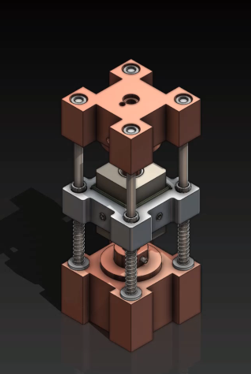
Resistance-based sintering is a highly effective method for consolidating metal powders that combines the use of axial pressure with a flowing, high-intensity current without the need for atmospheric chambers. EWI began developing this technique a couple of years ago in an effort to replace spark plasma sintering. Our team made use of its considerable resistance welding and load-frame resources to devise trials with titanium powders, applying a projection-welding approach.

The resistance-based sintering process involves inserting the powder of interest into a conductive support frame with a materials-appropriate liner which is then sealed with conductive caps. The frame is placed into a resistance welding fixture. Pressure and current are applied to sinter the material into final shape within seconds.
The results have been extremely promising. Resistance sintering trials using several powder combinations have yielded fully consolidated parts with no evidence of internal oxidation and controllable porosity. In addition, the method offers several advantages for creating alloys over other known processes, such as die casting, metal injection molding, and hot isostatic pressing:
- On demand parts manufacturing
- Removes the need for expensive dies
- Eliminates atmospheric chambers and shielding gas
- No need for skilled supervision
- Significant reduction in energy needs
- Reduces or eliminates need for post-process machining
Resistance-based sintering has great potential for use across many manufacturing industries, from medical devices to the automotive and aviation sectors. EWI looks forward to helping companies adopt this game-changing technology.
To learn more or to explore using this method for a project, contact Olga Eliseeva, Project Engineer, at [email protected].